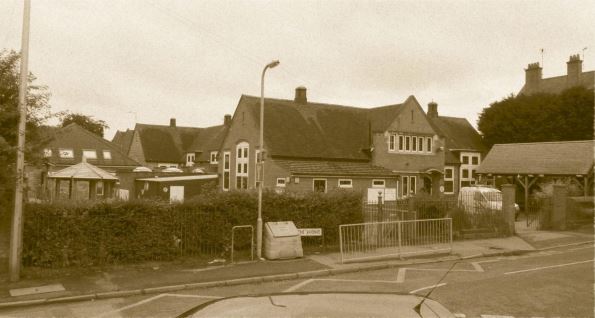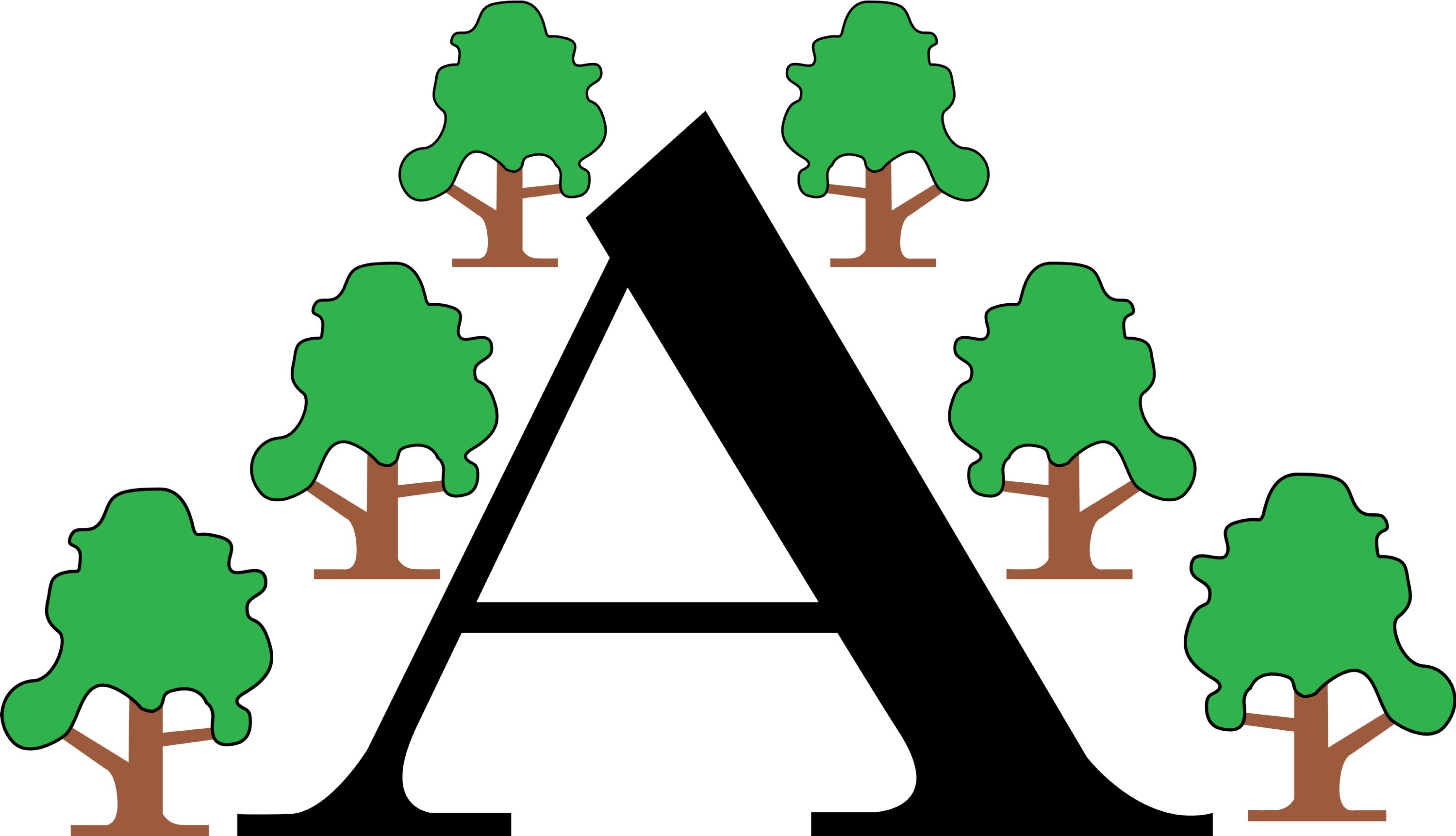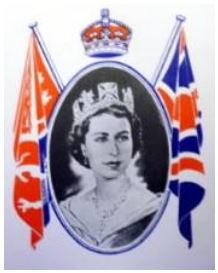The History of The Avenue Infant School
The Avenue Infant School opened to children on Wednesday 30th October 1912. Throughout the school's history, logs and records were kept by the head teachers, and we have these logbooks, other written records, admission registers and many photographs at the school to this day. Some of these logbooks, documents and photographs are displayed in the entrance to the school, which attract much interest from visitors and children alike.
Centenary Celebrations
To celebrate the centenary of the school in 2012, Peter Baxter wrote a book entitled 'The Avenue Infant School: The First Hundred Years' which collated lots of information and photographs from many sources and includes memories from ex-pupils and staff.
For a flavour of this book, see below.
The School Logbooks taken from 'The First Hundred Years!
The two-volume school log, which more than anything else communicates what occurred during the day to day running of The Avenue School since its earliest times, begins a few months after the opening in October 1912. Each heavy book has over 500 pages, and the first runs from June 1913 up to July 1949. It is bound stoutly in black leather and thick board, lettered in gold, and on the first page instructions are printed on what should and what should not be entered therein. It will be seen that on occasion these strictures were not adhered to with all the rigour they might have been.
In the front section are various appointment details, followed by the organisation (classification) of the school for the year commencing June 1st 1913.
School Admission Registers were completed from the 1940s where the details of every child who has attended the school are recorded (name, address, date of birth and their admission number). Despite having a computerised system installed in the 1990s the completion of these handwritten records still continues to this day!
A Century of Head Teachers and Beyond
- Janet Mclean (1862-1947) – Head from October 1912 to March 1922 (retired)
- Beatrice Ross (1895 – 1979) – Head from 1922 to 1939 (retired through ill health)
- Cicely Ruth Essex (1905 – 1980 – Head from 1939 to 1946 (moved to Nottinghamshire and became Mrs John Williams)
- Phyllis Howe (1909 – 1997) – Head from 1946 to 1964 (moved to Victoria Infants’ School)
- Ethel Ernestine Payne (1912 – 2002) – Head from 1964 to December 1966 (retired upon marriage to Mr James Stevenson)
- Georgina A Lindfield (1928 – 1996) – Head from January 1967 to March 1986 (retired)
- Moyra McFarlane (Acting) Head from April 1986 to July 1987 (previously appointed Assistant Head September 1983 then retired in 1987)
- Helen Fairley – Head from September 1987 to March 1998
- Gill Thomas-Hancock – Head from April 1998 to August 2015
- Helen Morrall – Head from September 2015
/1D1F844ABEA2B053601D9DD1E0C609F6.jpg)
Joyce Wilson, Josie Putnam — camera: Jean Hilton
Centenary Celebrations
To celebrate the centenary of the school in 2012, Peter Baxter wrote a book entitled 'The Avenue Infant School: The First Hundred Years' which collated lots of information and photographs from many sources and includes memories from ex-pupils and staff.
For a flavour of this book, see below.
History of The Avenue Infant School
Excerpts taken from ‘The Avenue Infant School: The First One Hundred Years’ written by Peter Baxter.
By 1900 Wellingborough had experienced forty years of relentless expansion eastward. The town’s population in 1861 was 6,382, and in 1871, 9,385; but over the next 30 years it almost doubled to 18,400. Successive late nineteenth century maps show progressively more and more agricultural land under development, with the construction of much new - principally terraced - housing. The birth rate continued to climb rapidly, and it had become quite obvious that more classroom space would be required very soon to cater for the town’s burgeoning infant population.
In accordance with these local needs, the Board of Education purchased land at the southern end of Poplar Avenue [then known locally as “Blott’s Avenue”, from the corn-merchant who had formerly occupied “The Poplars”] for the building of a separate, dedicated infant school. It was to have one classroom to hold 40 children, two to hold 48 children each, and four to accommodate 56 each.
/A91A0E74E079DC96252DC314847FAA7E.jpg)
All the books and equipment were transferred from the old classrooms in Great Park Street on Monday and Tuesday October 28th and 29th 1912, while the pupils were on holiday for the visiting fair. The first children crossed the threshold on Wednesday 30th October 1912.
The first Head teacher was Miss Janet Mclean and Miss Miriam Tomlin was the Senior Assistant Mistress. Recorded in the school log book are the organisation (classification) of the school for the year commencing June 1st 1913. It shows the class teachers and who taught whom, along with the numbers of children in each class.
“Std.I Miss Tomlin 51
Class I Miss Wharmby 50
Class II Miss Tompkins 44
Class III Miss Perkins 38
Class IV Miss Beeby 32
Class V Miss Hands 31
Total 246”
It appears that in these early days, the Education Authority held up The Avenue School as a bit of a showpiece. On a weekly basis, young women from all over Northamptonshire are there for training and observation. They come from Newton Bromswold, Pytchley, Burton Latimer, Sudborough, and on September 19th 1913, Miss Butler from Dingley visits to “get some insight into modern methods of teaching infants”.
/3CE64909C9BC86591F0380851519F9FC.jpg)
School closes regularly for the local fairs, feasts and tea-drinkings, both nonconformist and Anglican. School closes when the menagerie comes to town, for ‘Lord’ George Sanger’s circus, and for the day the King and Queen visit Northampton. Nature walks and rambles occur frequently when the weather is good. Attendance is low when the weather is bad.
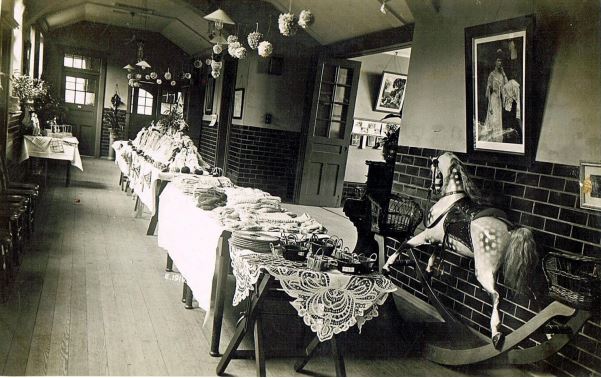
Initially there is no mention of the War in The Avenue’s log. In December 1915 there are six cases of diphtheria at the School. “Consequently”, notes Miss Mclean, “parents scared”. The children’s exhibition is postponed by order of the Managers. On December 8th Janet Mclean continues: “School closed by order of the School Medical Officer and the Secretary for Education owing to an outbreak of Diphtheria and general illness”.
“Heating Apparatus gone wrong” [not for the last time: see on] laments Miss Mclean during Armistice week 1919. “School closed from November 10th 1919 until January 5th.” In the event, School did not open until Thursday January 22nd 1920. “Attendance” writes the Head “fairly good considering the short notice to Parents”. To cover for absence, Hilda Lack is despatched on loan to Victoria School.
/9CAC59784B10EE1DE0D3A10FFD3E84B1.jpg)
On May 12th 1920 the Divisional Inspector of Schools, Mr Hands, spent the morning at The Avenue School, and a few days after “Children gave a patriotic concert to parents and friends, consisting of National Songs and dances”. “Blister pox” is rampant.
The Inspector’s report arrives:
“The school is of outstanding Merit. The relations between the teachers and children are of the happiest character, and the work of the school, as a whole, reaches a high level of efficiency. Special praise is due to the teachers for the admirable manner in which they illustrate the various lessons.”
On October 10th1928 a zoo visits Wellingborough [the town zoo in Croyland Hall grounds had yet to open], and the Managers grant a half-holiday on educational grounds, believing that a visit by the children will prove both instructive and interesting.
/6C7F8AC75E0904777F54C38B95FD1C65.jpg)
The first month of the new decade (1930’s) saw domestic disaster at The Avenue. During the holidays the boiler of the heating apparatus had given way, and a new boiler had to be installed. “The heat had not been on 24 hours,” writes the Head, “and the result was that the school was chilly as a vault, and full of steam”. It must indeed have been a curious sight. “Although the windows were open wide,” she continues, “we could not see out for steam.”
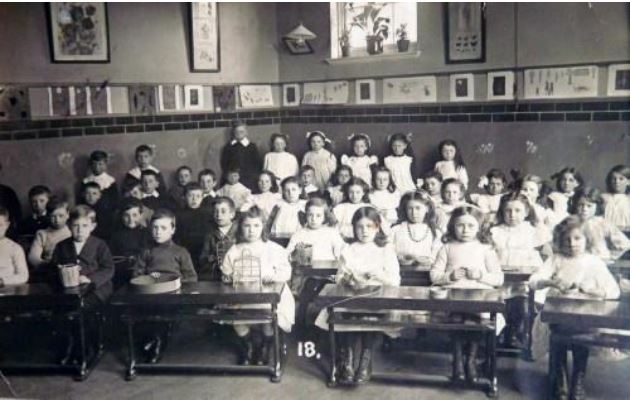
Due to the declaration of war on September 3rd, schools returned two weeks late for the autumn term in 1939.
As the reader may see from the article, evacuee infants from Moreland Street School [Moreland Street, off the City Road in E.C.1] attended The Avenue School.
The two shifts mentioned were 8.45 a.m. to 12.30 p.m., and 1.00 p.m. to 4.45 p.m. Local families were taking care of fifty-seven London children who were taught by four of their London teachers, and when it came to inspections, L. C. C. inspectors came all the way from London.
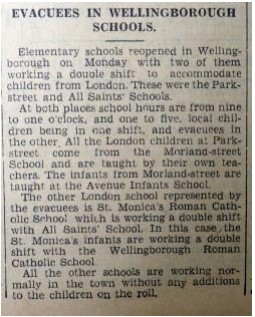
“Gas masks always at the ready – gas mask drill every few days, mainly in the covered area in the playground.”
On May 1st 1944, the School Meals Service began delivering to The Avenue School from its Church Street headquarters. The hot food was delivered in large aluminium containers fashioned in a variety of shapes, and plates were laid out on trestle tables in the hall.
/7CA289742E28065DE6DC32AA5F8595DA.jpg)
in the late 1940s: the children look fit and healthy on their ‘austerity’ diet.
During the early post-war years, The Avenue is still plagued by the usual variety of childhood maladies, and supply teachers come and go. In January 1947, the roll is over the 200 mark. However, attendance is down to 47% as the great blizzard makes itself felt. “School closed until further notice”, writes Miss Howe on March 5th, “as we are out of fuel and have no intimation when we shall receive any”.
The Avenue did not re-open until the 24th – they had received sufficient coke to heat it for a week.
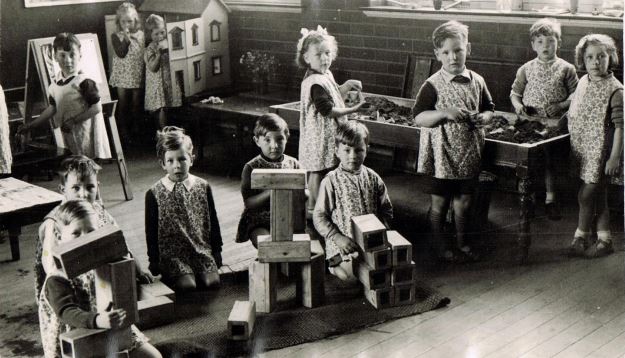
As a seasonal treat at the close of 1948, Miss Howe hired Mr. Lewis, a conjuror, to entertain the children. Then a concert of class items took place, and everybody sat down to a Christmas tea party. Mr. Lewis was the first of many seasonal entertainers who performed at The Avenue.
At the beginning of 1950, The Avenue roll stood at 248. The perennial medical inspections took place, and in June, at the annual sports competition at Eastfield Park, The Avenue tied with Saint Barnabas’ School. Each kept the cup for six months.
Both Avenue nursery classes were abolished at the start of autumn term 1952, in line with the Education Authority’s diktat that “under-fives need not be admitted”. Their two teachers were transferred to Croyland Road and Saint Barnabas Schools, and as a result only 17 children were admitted. Consequently, by January 1953, the school roll was down to 168.
In anticipation of the Coronation on June 2nd 1953, general celebrations took place at The Avenue.
Every child was presented with a Coronation mug courtesy of Wellingborough Urban District Council, and a blue-covered book entitled “Elizabeth, our Queen” from the County Education Authority.
/72D18A45DADBB8D3A21619EC682E753A.jpg)
In the hall, 45 years of constant attrition by little boots and shoes (many with metal reinforcements) have resulted in a very rough floor. The children have begun to suffer wood splinters to their hands and “thighs”. Miss Howe sent a “serious complaint” to the office, and within days in trooped the workmen (1957). Miss Howe had, however, failed to bargain for the noise and mess. “The noise of the electric motor in the Hall is terrific. Likewise, the thick dust which arises and penetrates everywhere”. Two days later, the situation is no better, and Miss Howe realises that she should have requested a school closure. Eventually, she obtains permission from the Assistant Education Officer, and the school is shut for three days. Upon return, she comments on how well the workmen have done – the floors are smooth, stained and polished.
/028E8B2A2A70864FDE2395DD29A5563F.jpg)
Miss Howe rejoices on July 5th1963 that the school now has a telephone [she must mean that one has been installed in the staff-room; it will be remembered that Miss Ross was able to ‘phone the doctor and the hospital back in the ‘20s, and the writer is certain that he can recall a large black Bakelite instrument, with its brown plaited flex, on Miss Howe’s office desk].
During the holidays, the electricians come in and fit new 150-watt bulbs in the classrooms. This improves the light considerably. The boiler is up the creek again in January, and when new grate bars are obtained, the coke is so small that lumps slip through. Start-of-year staff sickness is rife, although Miss Howe must have been comforted to learn that following an earlier interview she had gained the headship of Victoria Infants’ School, starting in September 1964.
On January 20th 1969 we read “The school acquired a hamster today”. Within a month, “The hamster has disappeared – suspect it has been stolen”. By March 14th: “We have been given another hamster”, and Mr. Don Hirons presents the school with a glockenspiel.
/C8D56A0548AD1E295E6F32B3BD5A2E38.jpg)
It is worth a few moments to reflect on the traditional Avenue ethos of charity giving, and it must be remembered that a pound was worth a great deal more in the late ‘60s than it is in 2012. Just between the start of Mrs. Lindfield’s time at The Avenue and the introduction of the decimal currency system, there were donations to the following:
- World Children’s Day - £3.10s.
- NSPCC - £5.1s.9d.
- Save the Children - £3.1s.10d.
- International Help for Children - £14
- Sunshine Homes for Blind Babies - £3.17s.
- World Children’s Day - £2.4s.3d.
- 32 Club - £12.16s.6d.
- Dr. Barnardo’s Fund - £11.10s.
Regular police talks of the “Say NO to Strangers” variety have been given to Avenue children since the end of the Second World War, and, following (though not necessarily because of) the three dreadful road deaths in 1944-5, road safety has been a frequent topic during constabulary visits.
Regular fire drills are conducted from the early ‘70s.
Mr. Brian Lee – variously described as “road safety officer”, “road safety magician”, and “road safety comedian” – came on an annual basis to lecture the children. Despite Mr. Lee’s Road Safety and Magic programme on October 28th 1970, a girl was involved in a lunchtime road accident within a month.
The roll at January 1971 was 176. A strike by tanker drivers meant that the heating oil supply was exhausted by the 6th. Staff came each day into a very cold school, which was closed to children until the 15th, when fuel was at last delivered.
On Sunday, May 9th, caretaker Mrs. Matthews telephoned the Head at 10.15a.m. The school had been entered during the night. The police were informed, although all that was missing was “8 new pence” from the staff room window ledge. On May 24th 1971 Mrs. Lindfield’s purse was stolen from her office. “It was found minus the money under a bush up The Avenue. The police are investigating”.
The children begin to take trips out farther from home: June 1971 sees them out at Woburn Safari Park. Items made by years 1 and 2 pupils are exhibited at the Co-operative Handwork Exhibition, and they are awarded a voucher for £1.
The annual jumble sale makes £60.67 for the school fund – primarily for the Christmas Party.
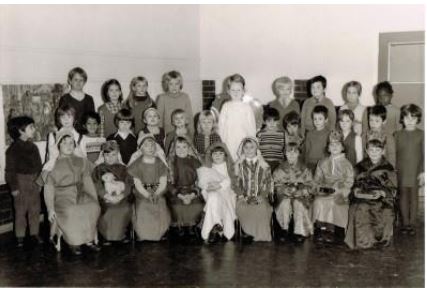
By summer 1973, there were 230 children in attendance, and a television set was rented, the cost met from the school fund. In June, another break-in occurred over a weekend. £3.92 and the school keys went missing. The police were at school within a day; not only to return the keys, but to inform the Head that the intruder had been caught, and that the court would be asked to order restitution of the cash.
“Talking of pets, our deputy head in the early days had his own slant on the subject. When on playground duty, he could be seen walking with and talking to his dog whilst a fascinated group of children would queue up to fuss and stroke this invisible creature. Many a harmless few minutes were spent in throwing and retrieving imaginary sticks.” –a recollection by Mrs. Jane Flint, (teacher, 1975)
Six Avenue children were selected to help plant trees in conjunction with National Tree Week in March 1976. A maple and a whitebeam were set in Sywell Close on the Vicarage Farm estate. The roll in September is 188.
In May 1977, bees swarmed in the playground, and Mrs. Jean Burridge was badly stung. Two lads damaged themselves on the same day in June. One received two stitches in his head following a fall in the yard, and, running round the cloakroom, a boy caught his hand and broke his fingers.
/0A5CB2D8D78F68730C3405BCA63BE39C.jpg)
In July, visiting a nearby house, Wellingborough Fire Service volunteered to show the children the fire engine and all the fire-fighting equipment. “A very interesting and spontaneous gesture which the children all enjoyed” writes Mrs. Lindfield. Mrs. Vyas took over as the minority ethnic teacher in September 1982, weekly hours reduced to two and a quarter, reflecting the fall in numbers.
The Avenue School obtained a video machine this term, and as a part of National Book Week the children all paid a visit to Wellingborough Library. A suspected break-in brought Mrs. Lindfield back to school on the evening of October 8th, although nothing was found to be missing.
On the night of December 29th, during the Christmas holiday, there was another break-in. A skylight was dislodged and the stock-room door was damaged. Drawers in the classrooms had been ransacked, but nothing of value was taken. The police once again took fingerprints. Then, the following night, the intruders returned. This time they took the school’s new video machine. These unpleasant events took place only days after Mrs. Lindfield had re-married, at the United Reform Church in High Street. At the start of 1983 we read in the logbook: “The Headteacher’s name is now Mrs. G. A. Boyce”
On September 1st 1987, Helen Fairley writes: “Mrs. Helen Fairley took up her position as Head teacher of The Avenue Infants School. During the preceding holiday, Mrs. Fairley had procured £500 from Mr. Mike John and used this to transform the front cloakroom into a cloakroom and language bay. She also acquired free paint from Mr. R. Knight, and this was used to paint class 4 and the front cloakroom.”
New Head: new ideas. The children enter informally through the rear door from 8.50 a.m., in order to eliminate congestion in the cloakroom and to reduce parent/teacher contact time. The roll was down to 96, in four classes.
Mrs. Fairley invites Mr.Bazeley from the Premises Department to come to The Avenue to talk about the condition of the school - in particular, the furniture. He promises his support. The following day the Area Education Officer visits the school to discuss erecting a fence to separate the playground from the car parking area. He agrees that dangers existed with a shared car park and playground with open gates, and that this arrangement presents a real risk to children’s safety. In the short term, he promises that catches will be fitted to the gates so that they can remain shut during school hours. Mrs. Fairley organises a parents’ meeting with a view to setting up a fund-raising group, and a letter is sent out proposing a jumble sale.
During the Easter break in 1989 the school was broken into for the umpteenth time, and the video machine and tapes were taken. Within a week another machine had been delivered. Mrs. Fairley had cause to complain to County Hall, as the playground fencing had not been erected as promised during the holiday.
“Perhaps one of the most exciting lunchtimes was when the flagpole began to sway when all the children were in the playground. Lunchtime supervisors, under the leadership of Mrs. Moore, held the pole up in the wind until the Fire Brigade arrived.
/94CA39D7DAEC9CBE22B85B92B0F2C2FD.jpg)
In April 1998 Mrs. Gill Thomas-Hancock was appointed Headteacher, at the time of the centenary in October 2012 she writes;
Staff, Governors, visitors, families and children at The Avenue surround and envelop the school in a richness of diversity, characteristics and skills, all of which help to make The Avenue the vibrant, colourful and successful community that it is. People often speak of our school, and the people in it, as being like a family, and that is definitely something we have striven for over the years. “The people in The Avenue have become part of my extended family and it is very much my second home (indeed some children do believe that I live in my office, and have a bed up there too: I don’t, by the way!
“Our aim has always been to make The Avenue as welcoming as possible; a happy place where worries and concerns can be easily shared and a place where everyone does their very best to give our children an experience that will stand them in good stead for the rest of their learning lives. It is a place where everyone truly works together for the benefit of all our children.
“These features can be traced back into the history of The Avenue, and I am proud to be part of that continuing tradition. I wouldn’t want to work in any other school…”
